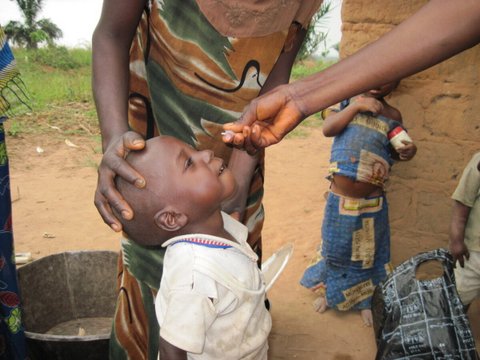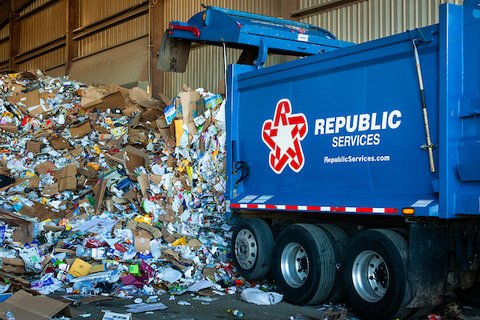
21 Feb USAID Shutdown Puts the Health of Americans at Risk

A young boy receives his polio vaccine in the Democratic Republic of Congo. (“MSH. DRC Mwene Ditu Immunizing Children against Polio to Ensure a Healthy Future. A young boy gets ready to receive the vaccine..jpg FINAL” by USAID Democratic Republic of Congo / Flickr / CC BY-NC 2.0 license)
By Sunita Sohrabji, Ethnic Media Services
The abrupt shutdown of USAID-funded projects has sent shockwaves through the global health community, with experts warning of severe consequences for disease research, vaccine development, and international health security.
Founded in 1961 by President John F. Kennedy, the U.S. Agency for International Development has played a pivotal role in combating infectious diseases such as HIV, malaria and tuberculosis. It has provided life-saving medical treatments in regions that would otherwise struggle to access them. The agency’s abrupt closure by the Trump administration’s new Department of Government Efficiency has left numerous projects in limbo, including essential funding for vaccine research and long-term studies aimed at preventing future pandemics.
Several lawsuits have been filed and lower court judges have issued temporary injunctions halting the scrapping of funding and programs. In 2023, the U.S. spent $71.9 billion on foreign aid, about 1.2% of its annual budget.
Soft Power
“The U.S. had a great outreach program. We touched a lot of people around the world through USAID,” said Dr. Benjamin Neuman, professor of biology and former chief virologist of the Global Health Research Complex at Texas A&M University. “These are all projects that are dual benefit. They’re helping someone in another country, and they are directly or indirectly, in the short or long term, really helping here.”
“Stopping those projects right in the middle is really bad for science. There are ideas that may not ever get tested that could have become vaccines for HIV. There are countries that could have been malaria-free a year from now that may not be,” said Neuman in an interview with Ethnic Media Services.
Here are portions of the discussion, which can be watched in its entirety below.
Dr. Benjamin Neuman, professor of biology and former chief virologist of the Global Health Research Complex at Texas A&M University.
Where are the big challenges for research as USAID funding stops?
Neuman: HIV is a great big bubbling cauldron of a disease. Once you get HIV, you can never be really cured of HIV. It’s still in there somewhere. You can potentially suppress it with lots of antivirals or some people will genetically suppress it at least part way, but they are still potentially infectious at some point, and it’s taking years off of their lives.
HIV is a virus that spreads once it gets over to other countries. We think this is how it started way back before we even knew what HIV was. We’re not going to stop planes and transnational commerce just because there’s HIV in the world. These are going to continue. And so the more there is over there, eventually the more there is everywhere.
HIV Vaccine Trials
There were two vaccine trials that are really kind of neat. One was a vaccine to be given to people who are already infected. And the idea was that this might be able to build antibodies that can help protect people for longer and enable their bodies to fight HIV right where it is, which would very much limit their chances of spreading it to somebody else. So that was really cool.
The other one was for people who haven’t got HIV yet.
>>>From Our Archives:
Doctors Debate COVID-19 Booster Shots<<<
The reason why you would want to do science like this in a place like South Africa is that there’s a very high incidence of HIV. People are going to come into contact with it there, whether they like it or not. So you have a chance to do some good and you have a chance to see if your vaccine actually works.
You have to partner with other countries in things like this. And it’s not just throwing money at those countries. It’s the government funding vaccine development. And if the government doesn’t fund vaccine development, basically there are no vaccines.
Can’t countries do this for themselves without USAID funding?
The problems tend to creep up in countries that are still developing. Take Burkina Faso. The road network is not great. Running water is not available everywhere. They have bigger problems and developing the next generation of HIV vaccine is not a priority.
They also don’t have the sort of infrastructure that can produce nanoparticles with a particular recombinant protein on them in enough quantity to be able to put into people to make this thing work.
The next big threat we face is avian flu. Given that we’ve now stopped monitoring avian flu in 49 countries, are we prepared?
We’ll know when it gets here, but we won’t know when it’s coming. This is why we have satellite weather radar, so that we can see the hurricane before it floods Houston, destroys Puerto Rico or does whatever terrible thing it’s going to do.
>>>Read: Experts Warn About Deadly Bird Flu and ‘More Aggressive’ COVID Variant<<<
Being prepared gives you time to come up with some kind of vaccine and just figure out what you’re going to do. If we had known COVID was coming, the U.S. probably could have started producing masks instead of saying, ‘Oh, we’ll just import those from China, and everything will be OK.’ If we’ve turned off our early warning system, there will be no early warning. The tidal wave will hit, and we’ll know when we’re wet.
Dr. Neuman, skeptics would say that diseases like Ebola or malaria don’t directly affect Americans, so why should we invest in them via USAID?
Look at the last Ebola outbreak. It didn’t directly impact Americans for about a month. Then, people were on planes, they came over to Texas, they came to other places, other countries, and then, all of a sudden, you have Ebola here. Viruses don’t understand international borders. If it starts one place, the virus is going to replicate in humans.
And so wherever humans go and wherever humans meet other humans, that is where these viruses and these diseases are going to spread.




No Comments